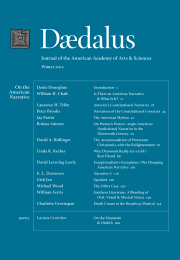Death Comes to the Broadway Musical
The Broadway musical is an excellent prism for viewing the narrative of American life – as it is, has been, and perhaps should be. In the first part of the twentieth century, musicals viewed life through rose-colored glasses; musicals were equivalent to musical comedy. Starting in the 1940s, the mood of musicals darkened. One indication of the new, serious tone was that characters in musicals died in the course of the show. This essay examines several questions relating to death in the Broadway musical, such as who dies, when in the course of the drama the death occurs, and how the death is marked musically. It concludes with a look at musicals involving the deaths of historical characters and at AIDS-related musicals, works whose assumptions and ideals are very far from those of the musical comedies of the early twentieth century.
Bertolt Brecht called the Broadway musical “the authentic expression of all that is American,”1 but he did not mean that as a compliment. Compared to the serious, politically engaged theater pieces that Brecht preferred and wrote, the Broadway musicals he saw seemed trivial and superficial. Many authors would agree that the Broadway musical is an excellent prism for viewing the American narrative; moreover, they would not be dismayed by this idea. Indeed, several books, including literary scholar Andrea Most’s Making Americans: Jews and the Broadway Musical and musicologist Raymond Knapp’s The American Musical and the Formation of National Identity, have made the case that the Broadway musical not only reflects American mores and values but, by holding up a mirror to the nation, actively shapes the American psyche.
During the first third of the twentieth century, the Broadway musical was equivalent to musical comedy. It had much in common with the movie genre now called rom-com, or romantic comedy. Musicals of the 1920s and 1930s had happy endings–specifically, endings that, after tribulations or at least complications, united the young lovers, presumably to live happily ever after. Characters in these musical comedies were often one- or two . . .
Endnotes
- 1Quoted in Larry Stempel, Showtime: A History of the Broadway Musical Theater (New York: W.W. Norton, 2010), 484. The quote originally appeared in Bertolt Brecht, Collected Plays, vol. 7, ed. Ralph Manheim and John Willet (London: Methuen, 1976), 420.
